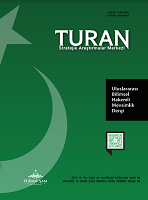MİMARİDE ESNEK VE DÖNÜŞTÜRÜLEBİLİR TASARIM
FLEXIBLE AND CONVERTIBLE DESIGN IN ARCHITECTURE
Author(s): Sibel DemirarslanSubject(s): Architecture, Sociology of Culture, Sociology of Art, History of Art
Published by: Sage Yayınları
Keywords: Design; Flexibility; Transformation; Design for all,;Functionality;
Summary/Abstract: The foundation of architectural design is focused on knowing the function, the user and the context. When the information on these three basic topics is obtained, the design will be fast, successful, functional, suitable for needs and expectations, compatible with the city, and aesthetic. However, today, knowing the user is not always possible at the beginning of the architectural design process. In this case, a design is made for the general user. This seems to be an inevitable situation in the transition from the individual to the global in today's world. Along with the architectural design, the carrier system, installation solutions and requirements for insulation can also complicate the usage process. Such situations may lead to user interventions in the building. It is necessary to provide the opportunity to offer solutions and usage with a transformable and flexible design approach for uncertain situations such as user profile, culture, function, economic situation, need and taste. Thus, a sustainable transformation will occur that can meet the design criteria for everyone. It is known that it is ideal to be able to make custom designs for the user, but today, the increase in the world and city populations necessitates flexible designs. In this study, flexible design is discussed in this context.
Journal: TURAN-SAM
- Issue Year: 15/2023
- Issue No: 58
- Page Range: 107-110
- Page Count: 4
- Language: Turkish

